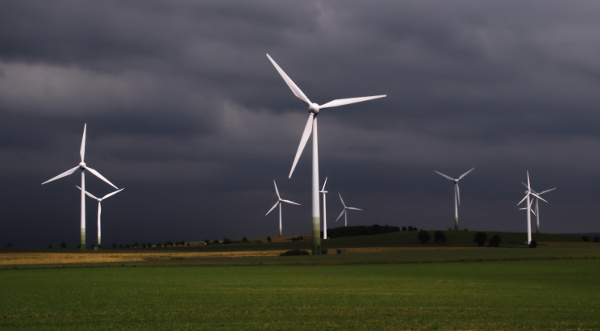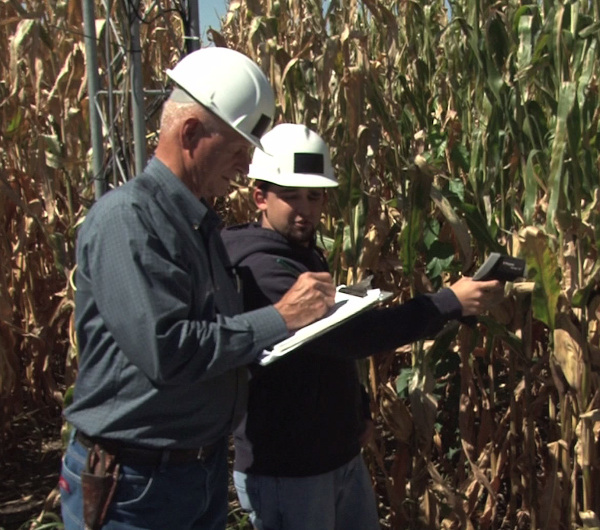Bigger than a Butterfly
January 11, 2011
Everyone is familiar with the
butterfly effect, the idea that a
butterfly flapping its wings somewhere in the world could cause a
tornado somewhere else. This, of course, is an exaggeration, but the reason we remember it is because of the exaggeration. If it were presented as a few equations involving
sensitivity to initial conditions for some process, it would just remain in the specialist literature. The butterfly's affect on
weather goes back to the work of
Edward Lorenz, a
mathematician turned
meteorologist, who was running
computer models for weather prediction. Lorenz discovered, quite by
accident (as many scientific discoveries are made), that a small change of a few hundredths of a percent in an initial condition gave him an entirely different weather forecast. I sometimes have the feeling that our local weathermen are still running that same code.
A
wind turbine is a lot larger than a butterfly, and a turbine does modify airflow. This is apparent in the design of
wind farms, since the turbines are spaced a distance apart to prevent interference of one's air stream on another's performance. In
one example, the wind turbines of the
Horns Rev wind farm on the coast of
Denmark are spaced seven diameters apart, but the downstream turbines generate about a quarter less power than the front row turbines.

Wind Park in Saxony, Germany. (Photo by "Eclipse.sx")
A recent editorial in
Nature [1] reviews the potential environmental affects of wind turbines. Considering
Climategate, it's not surprising that there's been a lot of vehement commentary about whether wind turbines, a
green energy source, actually harm the environment in some ways.
In 2004, Somnath Baidya Roy and S. W. Pacala of
Princeton University, along with R. L. Walko of
Duke University, published a paper [2] in which they modeled a large
Great Plains wind farm under summertime conditions. The turbines were modeled as a sink for wind energy and sources of
turbulence. Not unexpectedly, the wind farm was found to significantly slow the wind at the turbine level. Turbine turbulence was found also to cause warming and drying of the surface air and reduced
heat flux to the surface. This effect was found to be most intense in the early morning hours when the wind speed at the turbines is greatest because of what's called the
nocturnal low‐level jet. This temperature change can benefit agriculture, since higher temperatures and drier air in the mornings will decrease
frost damage.
In a follow-up study, published in the
Proceedings of the National Academy of Sciences,[3] Roy, who is now at the
University of Illinois, and Justin J. Traiteur, also of the University of Illinois, investigated the changes in near-surface air temperatures at wind farms caused by enhanced vertical mixing due to turbine rotor turbulence. They examined also a twenty-five year climate dataset to identify regions of the world where wind turbines will have a low-impact on local weather. Two of these low-impact regions are the Great Plains and
Midwest of the United States, so some of the best locations for wind energy are still "green."
Changes in surface conditions caused by wind turbines were also found in a joint
Ames Laboratory,
University of Iowa and
University of Colorado study.[4] The research team used
lidar to measure turbulence at all atmospheric levels from the turbine hub to ground level. I mentioned lidar in a different context in a
previous article (Radar and Lunar Lidar, January 6, 2011). Julie Lundquist, the team member from the University of Colorado at
Boulder, reported that the lidar "could detect a beautiful plume of increased turbulence that persisted even a quarter-mile downwind of a turbine." Their finding is that the turbines increase airflow over surrounding
crops, which may help
corn and
soybean crops stay cooler and dryer. These conditions typically reduce
fungal infestations and increase
carbon dioxide uptake.[4] The Ames researchers likewise foresee that turbine turbulence will speed up heat exchange, making crops slightly cooler during hot days and slightly warmer on cold nights. Says lead researcher, Gene Takle of the University of Iowa,
"When you think about a summer with a string of 105-degree days, extra wind turbulence from wind turbines might be helpful. If turbines can bring the temperature down below 100 degrees that could be a big help for crops."[4]

Scientists doing what scientists do - Taking data. (Still image from an Ames Laboratory video)
References:
- Editorial - Turbines and turbulence, Nature, vol. 468, no. 7327 (23 December 2010), p. 1001.
- S. Baidya Roy, S. W. Pacala and R. L. Walko, "Can large wind farms affect local meteorology?" J. Geophys. Res., vol. 109, 2004, D19101, doi:10.1029/2004JD004763.
- Somnath Baidya Roy and Justin J. Traiteur, "Impacts of wind farms on surface air temperatures," Proc. Natl. Acad. Sci., vol. 107, no. 42 (October 4, 2010), pp. 17899-17904.
- Gene Takle and Steve Karsjen, "Wind Turbines on Farmland May Benefit Crops," Ames Laboratory Press Release, December 16, 2010
Permanent Link to this article
Linked Keywords: Butterfly effect; butterfly; tornado; Chaos theory; sensitivity to initial conditions; weather; Edward Lorenz; mathematician; meteorologist; computer simulation; computer model; serendipity; wind turbine; wind farm; Horns Rev wind farm; Denmark; Saxony, Germany; Nature; Climatic Research Unit email controversy; Climategate; green energy; Princeton University; Duke University; Great Plains; turbulence; heat flux; nocturnal low‐level jet; frost; Proceedings of the National Academy of Sciences; University of Illinois; Midwest; Ames Laboratory; University of Iowa; University of Colorado; lidar; radar; Boulder, Colorado; crop; corn; soybean; fungus; carbon dioxide.